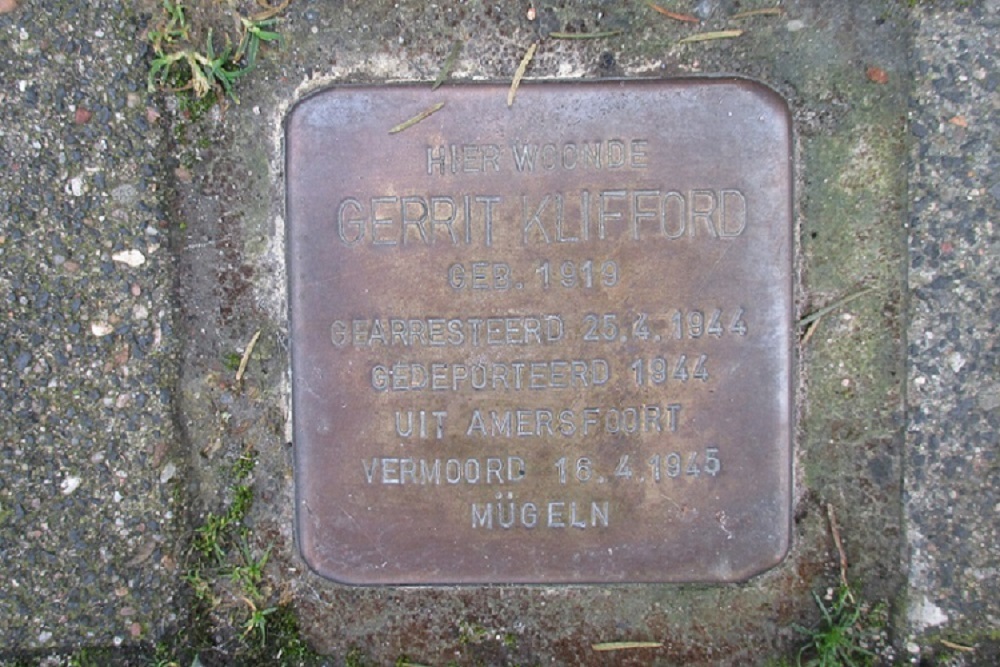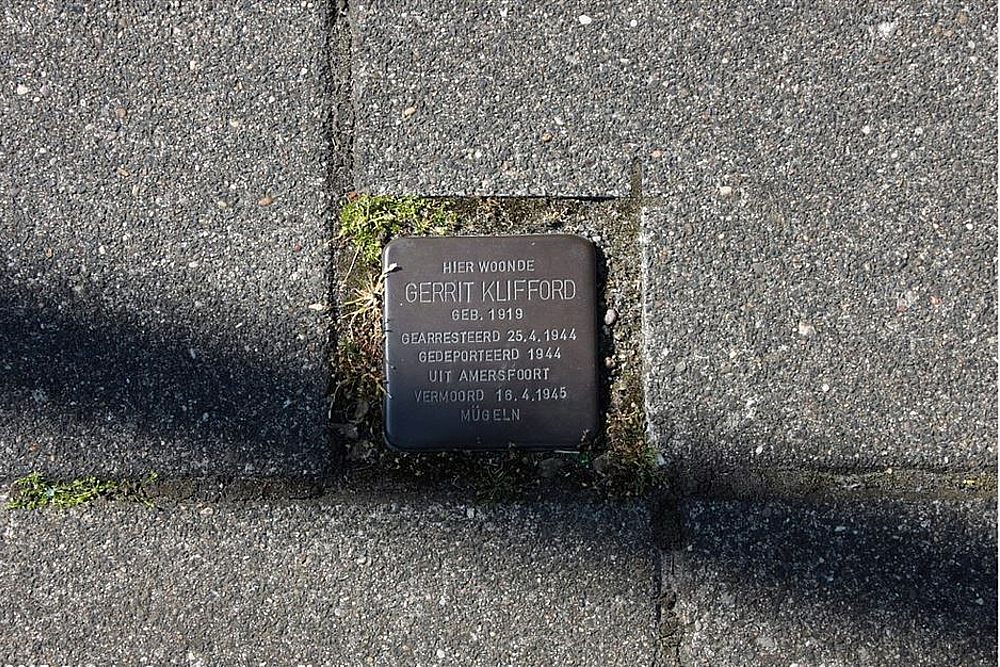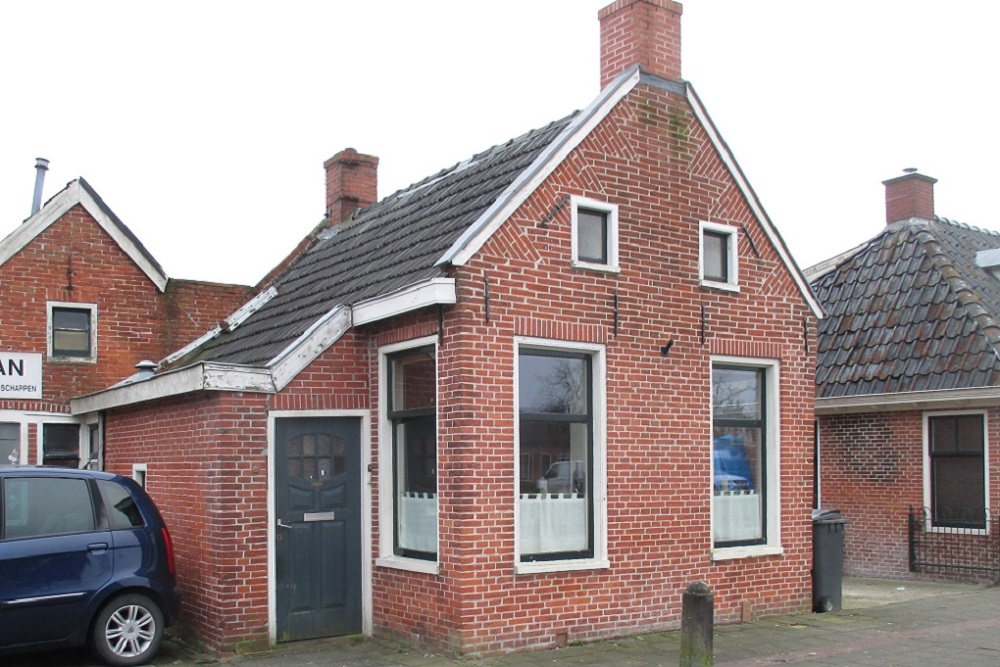Stumbling Stone Boterdiep Zuidzijde 29
This small, brass, memorial plaque (stolperstein, struikelsteen, or stumbling stone) commemorates:
* Gerrit Klifford, born 1919, arrested 25 April 1944, deported 1944 from Amersfoort, murdered 16 April 1945, Mügeln.
Gerrit Klifford was a civil servant in a distribution office. During the 25 April 1944 German revenge raids in Winsum, Bedum, Middelstum, and Zuidwolde villages, he and 147 others were arrested by the Germans. Eight were freed. The other 140 were taken by train the next day to Camp Amersfoort. On 7 July, he was deported with others to Germany. He ended up in the Peres labor camp, where he contracted tuberculosis. On 12 April 1945, Gerrit and 27 other sick laborers were taken in an open trailer to the hospital in Mügeln. Gerrit Klifford died there on 16 April – just before the Russians arrived.
The story of the raid can be found (in Dutch) in Groninger Gizelaars digitaal monument: Over de razzia.
"Stolpersteine" is an art project for Europe by Gunter Demnig to commemorate victims of National Socialism (Nazism). Stolpersteine (stumbling stones) are small, 10x10cm brass plaques placed in the pavement in front of the last voluntary residence of (mostly Jewish) victims who were murdered by the Nazis. Each plaque is engraved with the victim’s name, date of birth, and place (mostly a concentration camp) and date of death. By doing this, Gunter Demnig gives an individual memorial to each victim. One stone, one name, one person. He cites the Talmud: "A human being is forgotten only when his or her name is forgotten."
Borne was the first town in the Netherlands in which Stolpersteine were placed -- 29 November 2007.
Do you have more information about this location? Inform us!
Source
- Text: TracesOfWar.com
- Photos: Nico Nienhuis (1, 3), Suzanne Matrosov-Vruggink (2)
- Groningen 4045: Gerrit Klifford
- Groninger Gizelaars digitaal monument: Gerrit Klifford
Nearby
Museum
Point of interest
- Hiding Address Joseph and Regina Meijer - Bedum
- Plaque 'De Boog' - Winsum
- Bombardment Old Oostersluis Groningen - Groningen
Monument
- Memorial Raids Bedum April 25, 1944 - Bedum
- War Memorial Bedum - Bedum
- Memorial Bedum Town Hall - Bedum
Cemetery
- Dutch War Graves Bedum - Bedum
- Dutch War Graves Old Cemetery Sauwerd - Sauwerd
- Dutch War Graves Zuidwolde - Zuidwolde
Remembrance Stone
- Stumbling Stone Schoolstraat 8 - Bedum
- Stumbling Stones Noordwolderweg 23 - Bedum
- Stumbling Stone Thedemastraat 8 - Bedum






